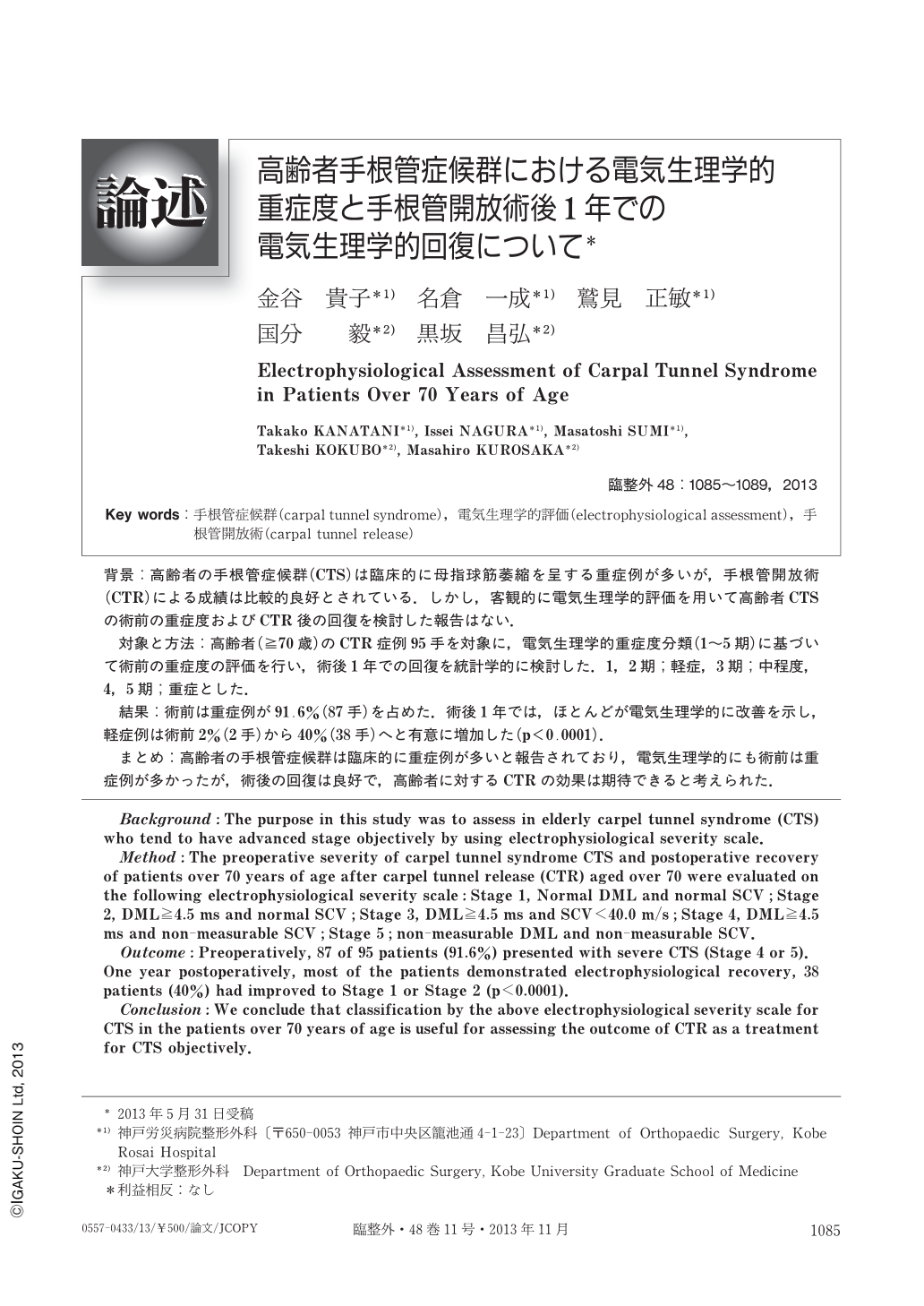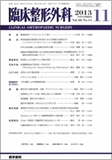Japanese
English
- 有料閲覧
- Abstract 文献概要
- 1ページ目 Look Inside
- 参考文献 Reference
背景:高齢者の手根管症候群(CTS)は臨床的に母指球筋萎縮を呈する重症例が多いが,手根管開放術(CTR)による成績は比較的良好とされている.しかし,客観的に電気生理学的評価を用いて高齢者CTSの術前の重症度およびCTR後の回復を検討した報告はない.
対象と方法:高齢者(≧70歳)のCTR症例95手を対象に,電気生理学的重症度分類(1~5期)に基づいて術前の重症度の評価を行い,術後1年での回復を統計学的に検討した.1,2期;軽症,3期;中程度,4,5期;重症とした.
結果:術前は重症例が91.6%(87手)を占めた.術後1年では,ほとんどが電気生理学的に改善を示し,軽症例は術前2%(2手)から40%(38手)へと有意に増加した(p<0.0001).
まとめ:高齢者の手根管症候群は臨床的に重症例が多いと報告されており,電気生理学的にも術前は重症例が多かったが,術後の回復は良好で,高齢者に対するCTRの効果は期待できると考えられた.
Background:The purpose in this study was to assess in elderly carpel tunnel syndrome (CTS) who tend to have advanced stage objectively by using electrophysiological severity scale.
Method:The preoperative severity of carpel tunnel syndrome CTS and postoperative recovery of patients over 70 years of age after carpel tunnel release (CTR) aged over 70 were evaluated on the following electrophysiological severity scale:Stage 1, Normal DML and normal SCV;Stage 2, DML≧4.5 ms and normal SCV;Stage 3, DML≧4.5 ms and SCV<40.0 m/s;Stage 4, DML≧4.5ms and non-measurable SCV;Stage 5;non-measurable DML and non-measurable SCV.
Outcome:Preoperatively, 87 of 95 patients (91.6%) presented with severe CTS (Stage 4 or 5). One year postoperatively, most of the patients demonstrated electrophysiological recovery, 38 patients (40%) had improved to Stage 1 or Stage 2 (p<0.0001).
Conclusion:We conclude that classification by the above electrophysiological severity scale for CTS in the patients over 70 years of age is useful for assessing the outcome of CTR as a treatment for CTS objectively.

Copyright © 2013, Igaku-Shoin Ltd. All rights reserved.


